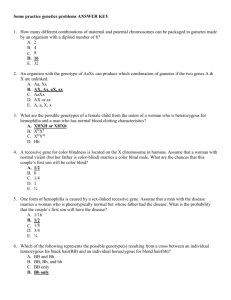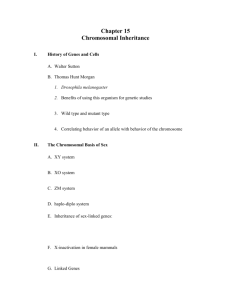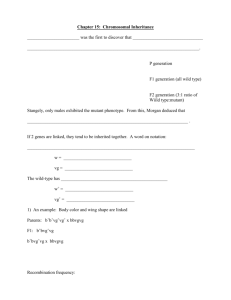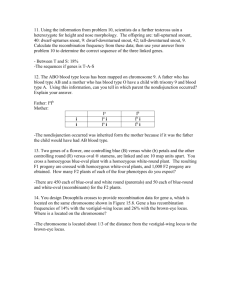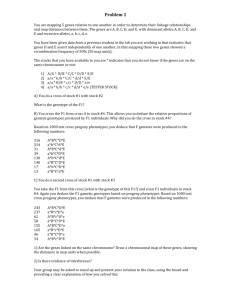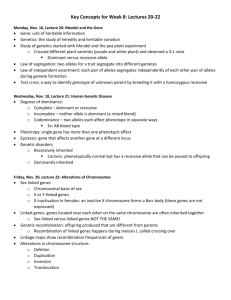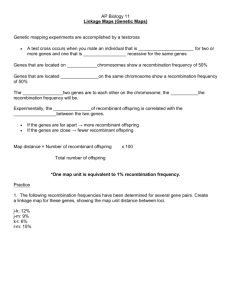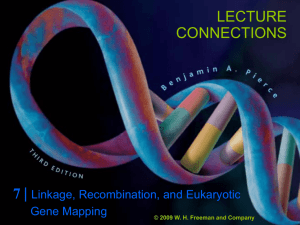Select one of your Biology instructors from another class and look
advertisement
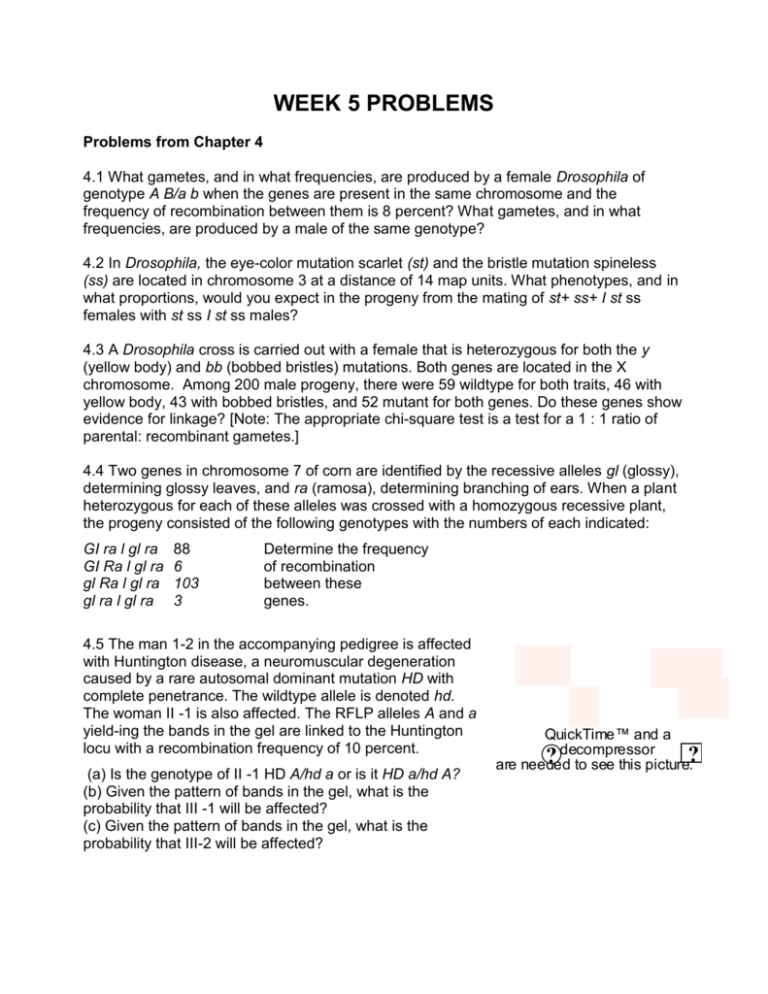
WEEK 5 PROBLEMS Problems from Chapter 4 4.1 What gametes, and in what frequencies, are produced by a female Drosophila of genotype A B/a b when the genes are present in the same chromosome and the frequency of recombination between them is 8 percent? What gametes, and in what frequencies, are produced by a male of the same genotype? 4.2 In Drosophila, the eye-color mutation scarlet (st) and the bristle mutation spineless (ss) are located in chromosome 3 at a distance of 14 map units. What phenotypes, and in what proportions, would you expect in the progeny from the mating of st+ ss+ I st ss females with st ss I st ss males? 4.3 A Drosophila cross is carried out with a female that is heterozygous for both the y (yellow body) and bb (bobbed bristles) mutations. Both genes are located in the X chromosome. Among 200 male progeny, there were 59 wildtype for both traits, 46 with yellow body, 43 with bobbed bristles, and 52 mutant for both genes. Do these genes show evidence for linkage? [Note: The appropriate chi-square test is a test for a 1 : 1 ratio of parental: recombinant gametes.] 4.4 Two genes in chromosome 7 of corn are identified by the recessive alleles gl (glossy), determining glossy leaves, and ra (ramosa), determining branching of ears. When a plant heterozygous for each of these alleles was crossed with a homozygous recessive plant, the progeny consisted of the following genotypes with the numbers of each indicated: GI ra l gl ra GI Ra l gl ra gl Ra l gl ra gl ra l gl ra 88 6 103 3 Determine the frequency of recombination between these genes. 4.5 The man 1-2 in the accompanying pedigree is affected with Huntington disease, a neuromuscular degeneration caused by a rare autosomal dominant mutation HD with complete penetrance. The wildtype allele is denoted hd. The woman II -1 is also affected. The RFLP alleles A and a yield-ing the bands in the gel are linked to the Huntington locu with a recombination frequency of 10 percent. (a) Is the genotype of II -1 HD A/hd a or is it HD a/hd A? (b) Given the pattern of bands in the gel, what is the probability that III -1 will be affected? (c) Given the pattern of bands in the gel, what is the probability that III-2 will be affected? QuickTime™ and a ? ? decompressor are needed to see this picture. 4.6 In corn, the genes v (virescent seedlings), pr (red aleurone), and bm (brown midrib) are all on chromosome 5, but not necessarily in the order given. The cross v+ pr bm I v pr+ bm+ X v pr bm I v pr bm produces 1000 progeny with the following phenotypes: v+ v v+ v v+ v v+ v pr pr+ pr pr+ pr+ pr pr+ pr bm bm+ bm+ bm bm bm+ bm+ bm 209 213 175 181 69 76 36 41 (a) Determine the gene order, the recombination frequencies between adjacent genes, the coefficient of coincidence, and the interference. (b) Explain why, in this example, the recombination frequencies are not good estimates of map distance. 4.7 The gel diagram to the right shows the DNA-band phenotypes associated with allele pairs for three linked genes. On the left are the phenotypes of the parents, and on the right are the phenotypes of the progeny and the number of each observed. QuickTime™ and a decompressor are needed to see this picture. (a) What is the order of the genes? (b) What is the genotype of the triply heterozygous parent? (c) What is the frequency of recombination in the smaller of the two regions? (d) What is the frequency of recombination in the larger of the two regions? (e) What is the value of the coincidence across the region? (f) What is the interference across the region?
